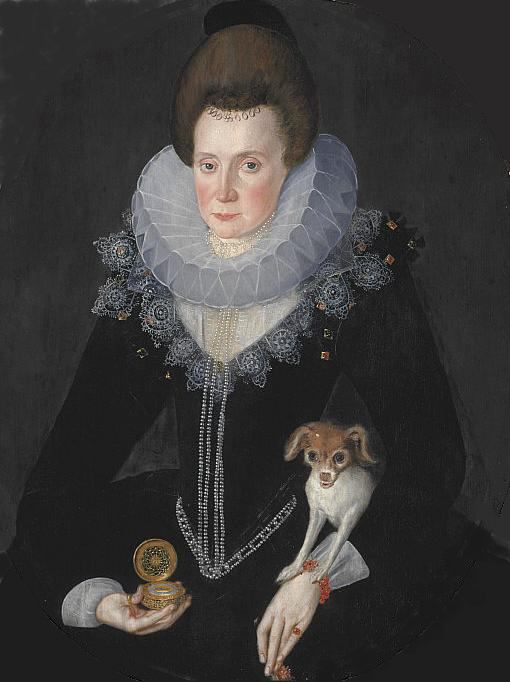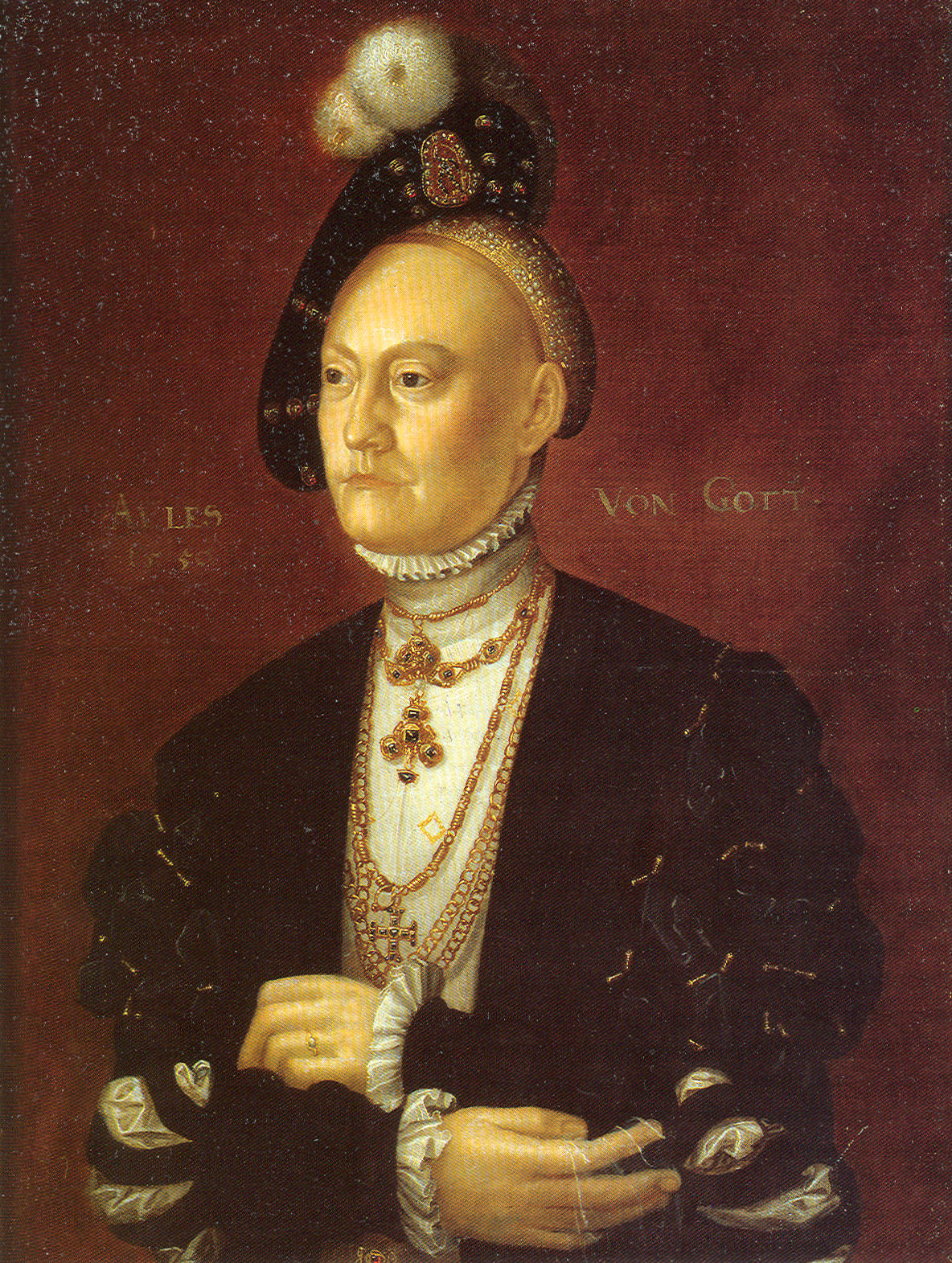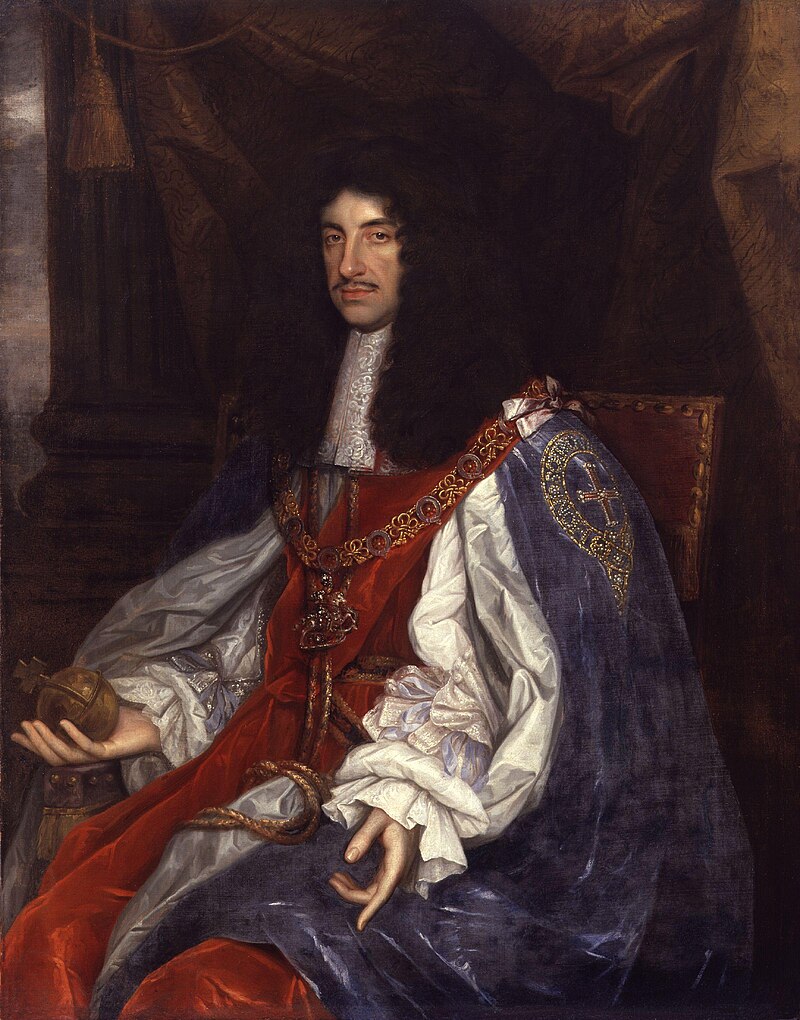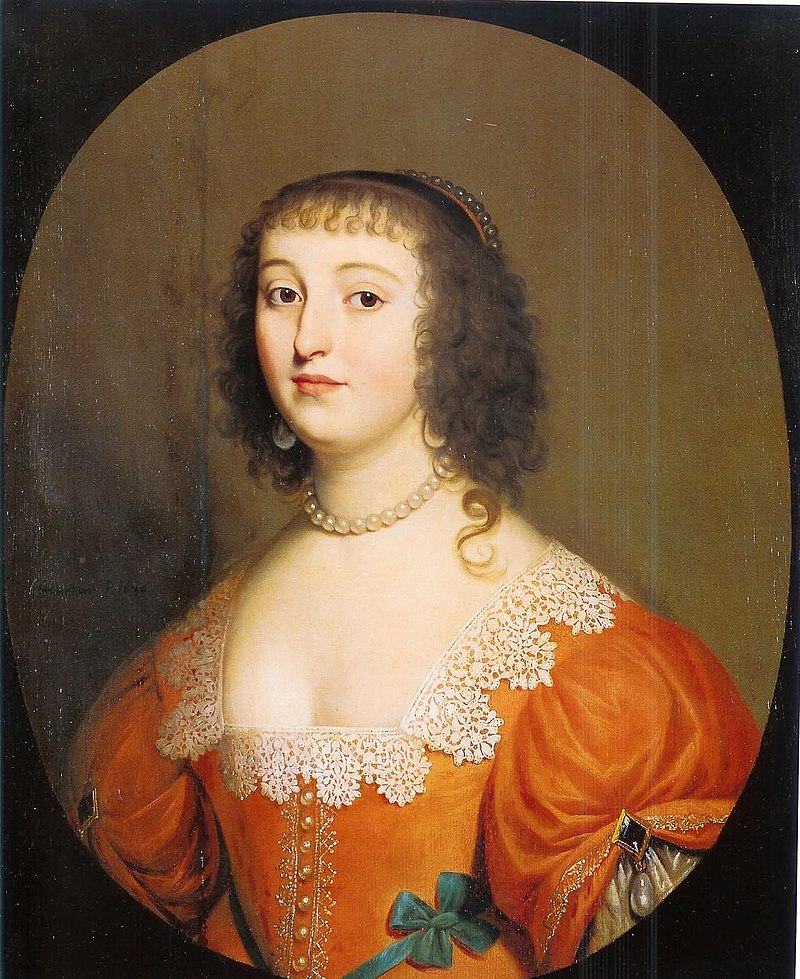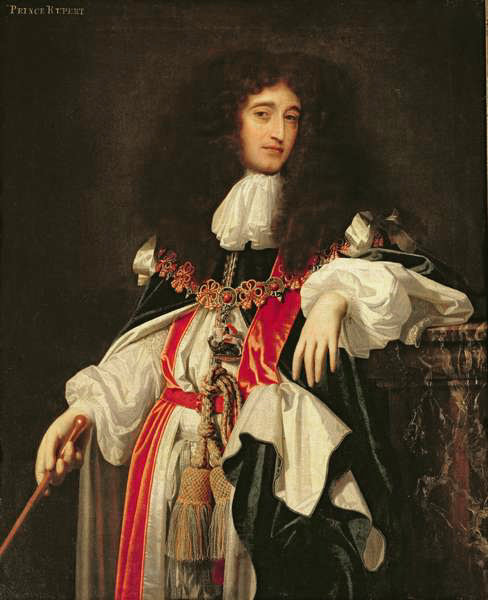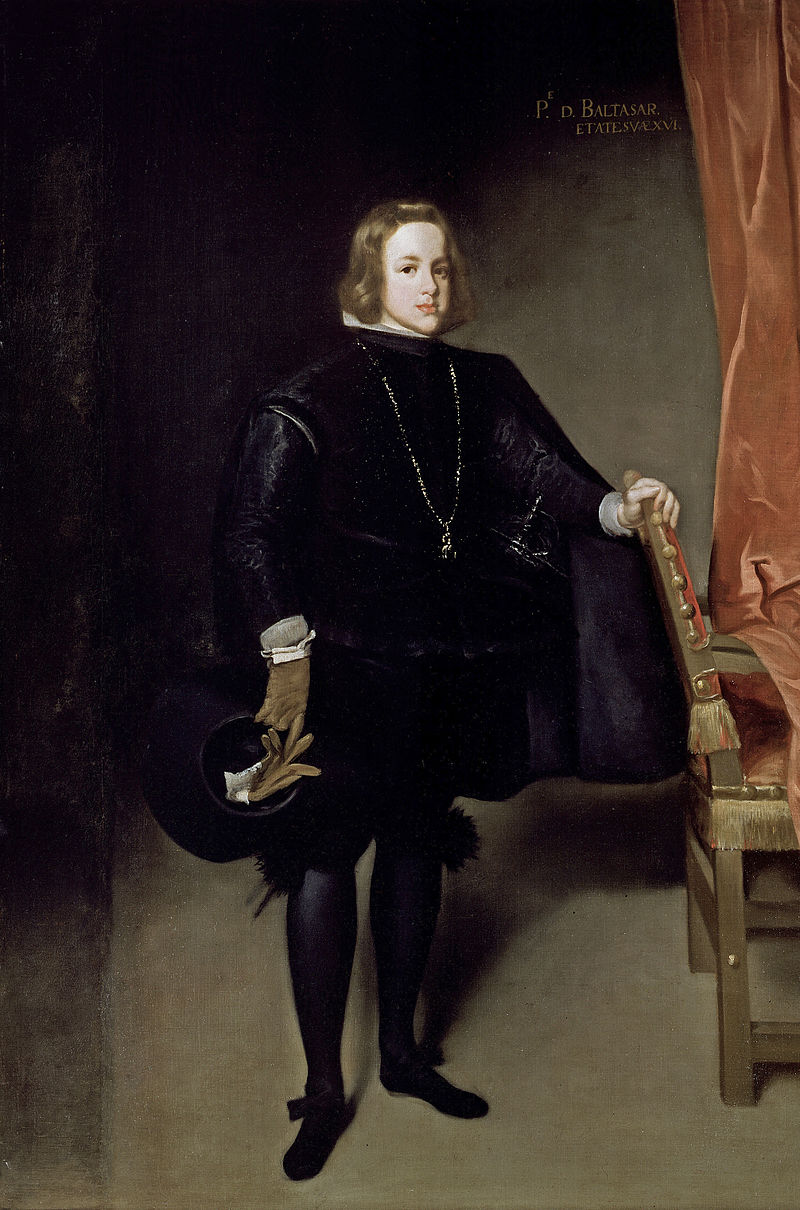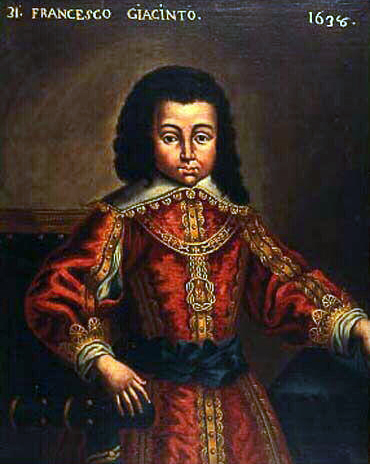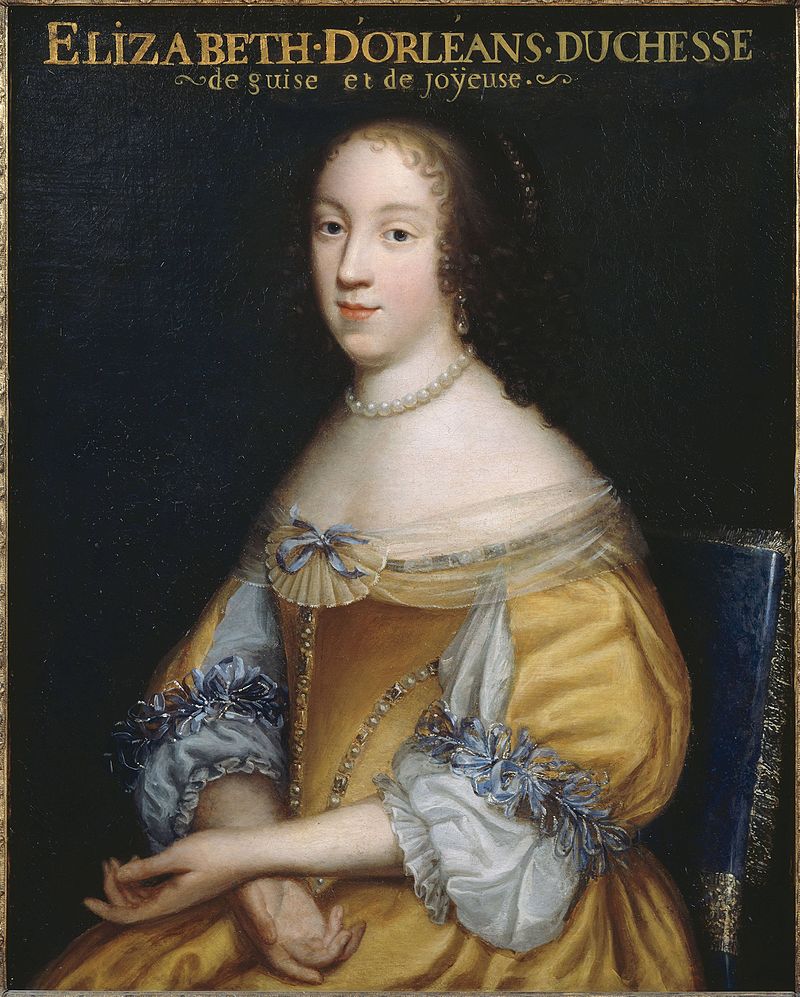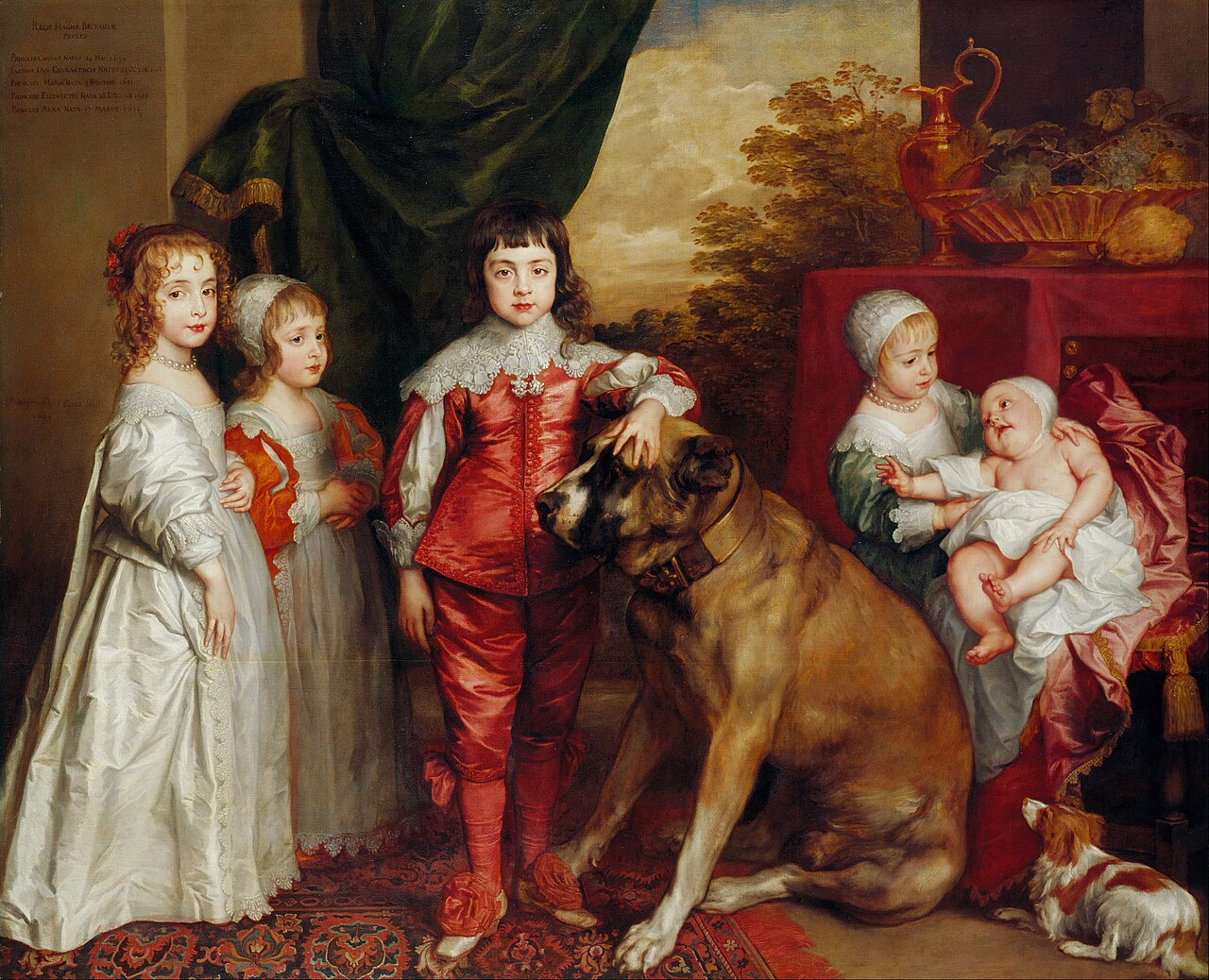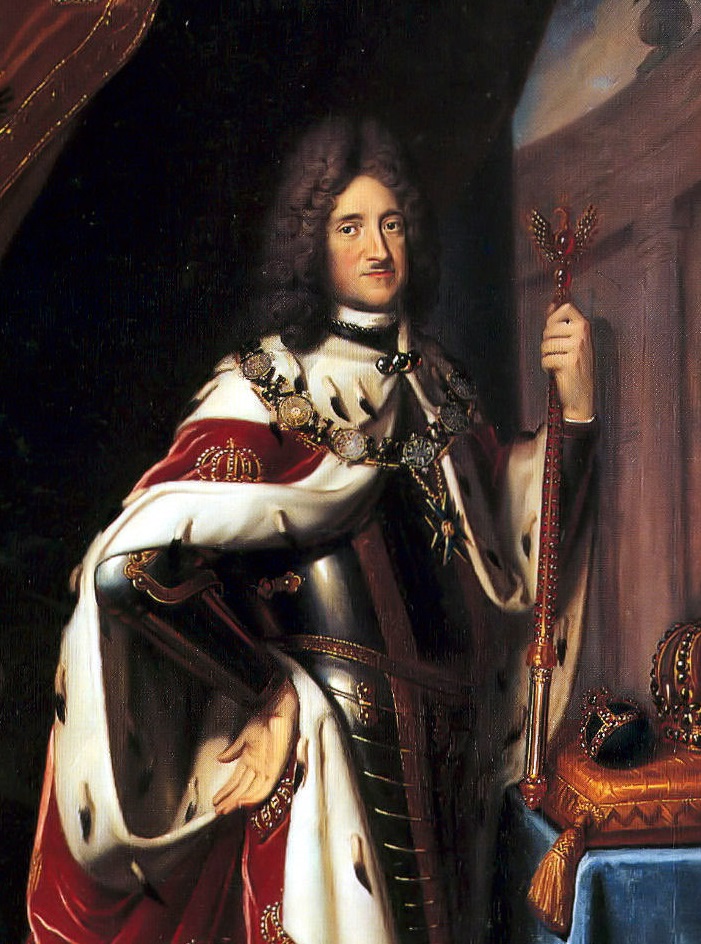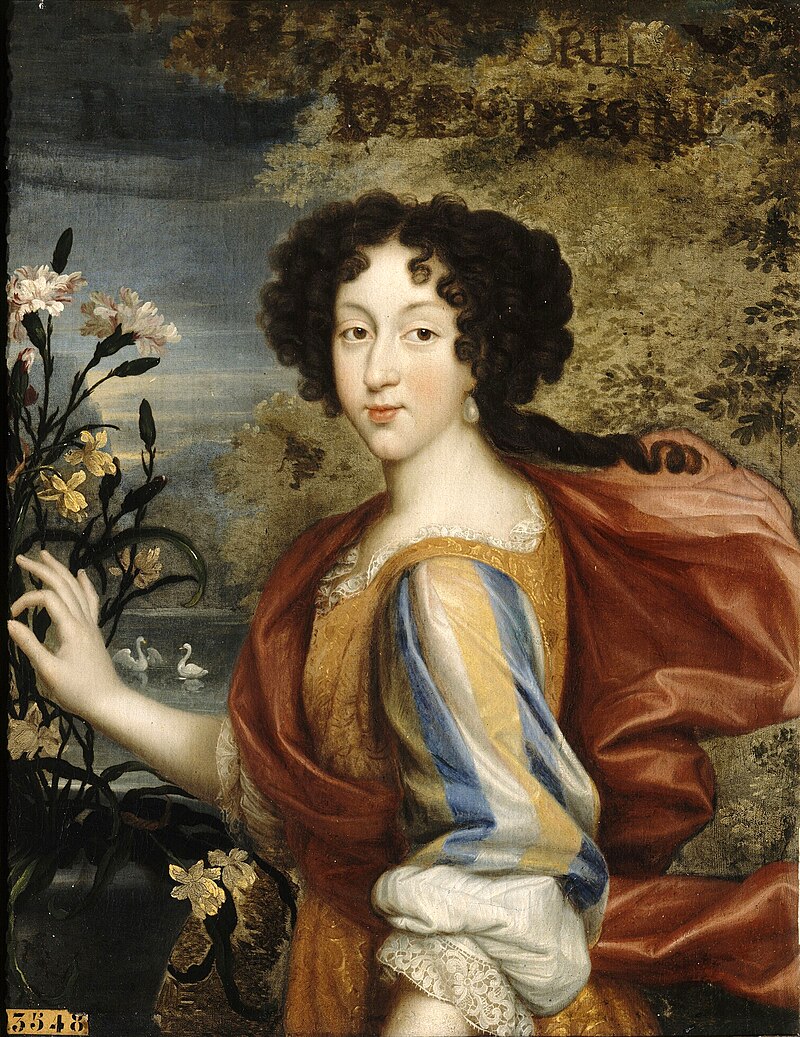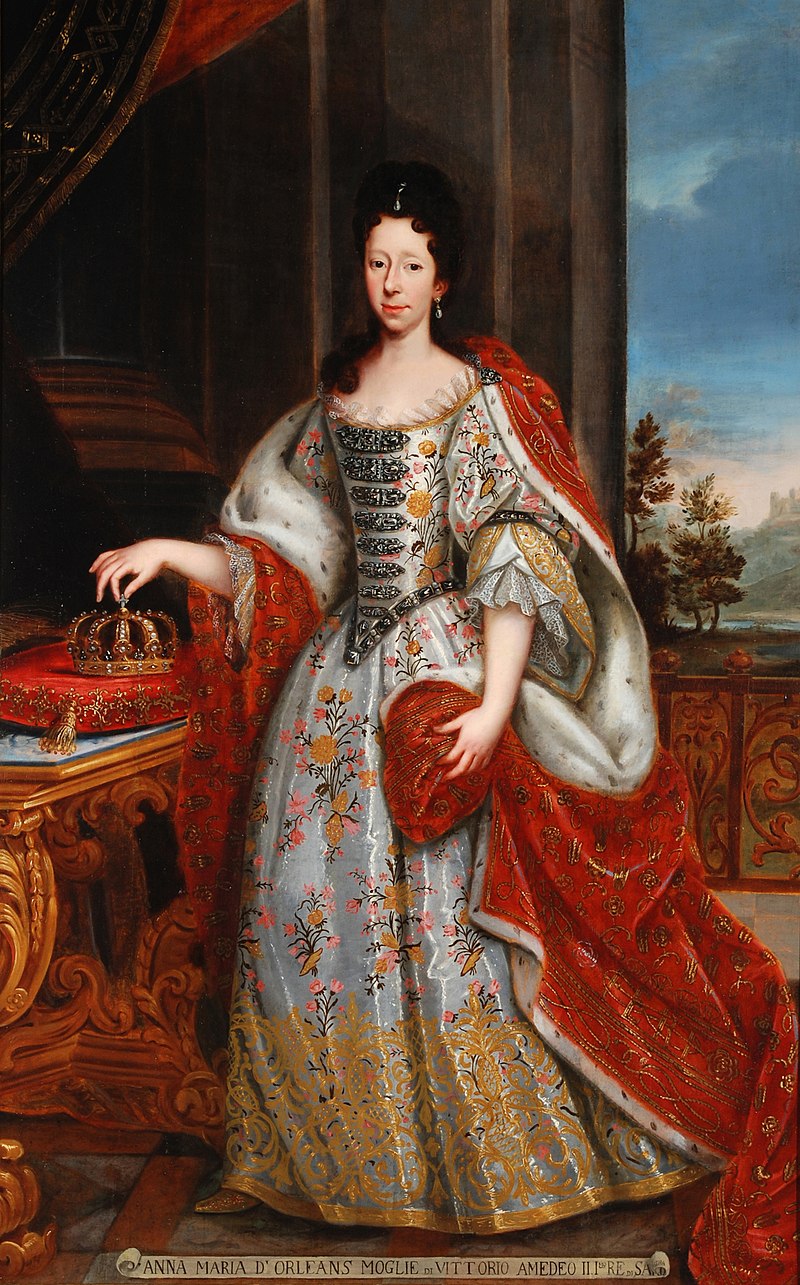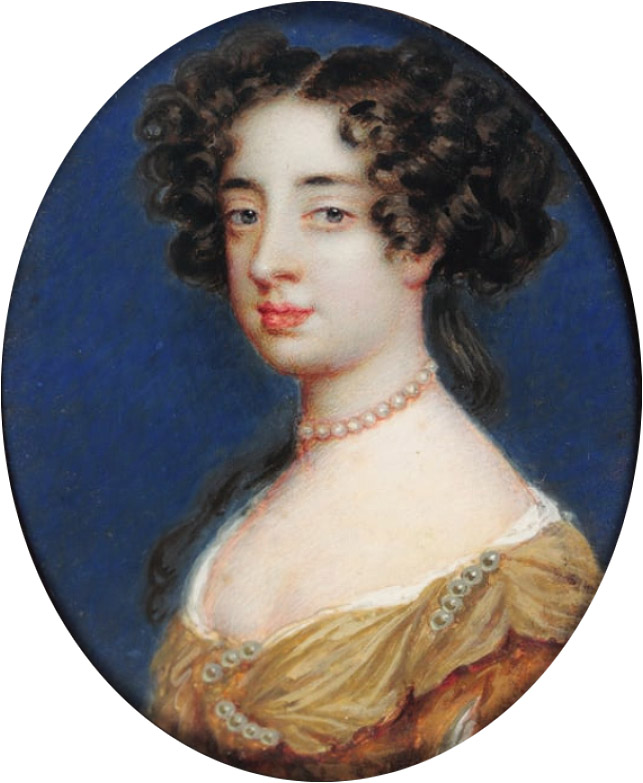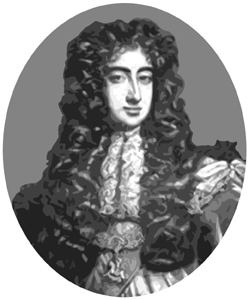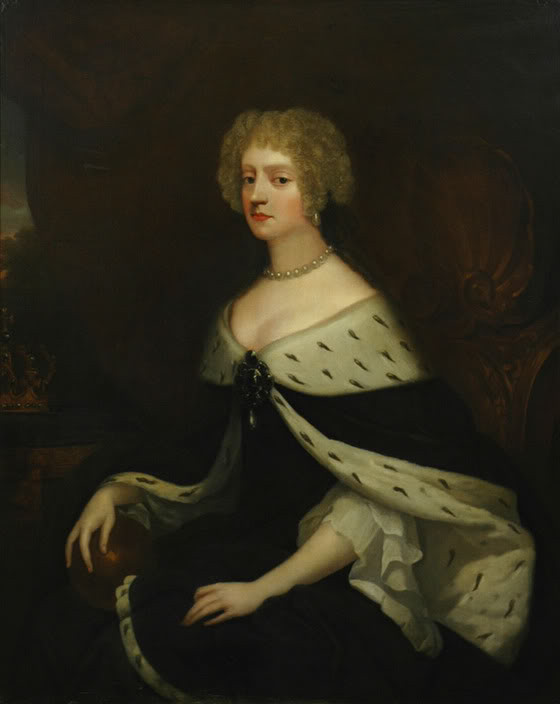by Susan Flantzer
© Unofficial Royalty 2019

Queen Elizabeth I of England (1533 – 1603)
(All photos credits – Wikipedia unless otherwise noted)
The last monarch of the House of Tudor, Queen Elizabeth I was the only surviving child of King Henry VIII of England and Anne Boleyn, the second of six wives. Elizabeth’s paternal grandparents were King Henry VII of England and Elizabeth of York, the eldest child of King Edward IV of England and Elizabeth Woodville. Her maternal grandparents were Thomas Boleyn, 1st Earl of Wiltshire and Lady Elizabeth Howard, the eldest daughter of Thomas Howard, 2nd Duke of Norfolk. After Elizabeth’s mother failed to give Henry VIII a male heir, he was determined to be rid of her, and her fall and execution were engineered by Henry’s chief minister Thomas Cromwell. Anne was found guilty of the fabricated charges of adultery, incest, and high treason, and was beheaded at the Tower of London. Elizabeth was not quite three-years-old.
25-year-old Elizabeth became Queen of England upon the death of her elder half-sister Queen Mary I, the only surviving child of Henry VIII’s first wife Catherine of Aragon. During Elizabeth’s reign, called the Elizabethan Age, the Church of England took its final form, a middle path between Catholicism and Reform Protestantism, William Shakespeare created numerous works, modern science had its birth based upon Francis Bacon‘s inductive method for scientific inquiry, Francis Drake sailed around the world, and the first colony in America was founded and named Virginia in honor of Elizabeth the Virgin Queen.
From the start of Elizabeth’s reign, it was expected that she would marry to provide for the succession. Although she received many offers, she never did marry and the reasons for this are not clear. She continued to consider suitors until she was about fifty. Since none of the children of Henry VIII had children, King James VI of Scotland, the only child of Mary, Queen of Scots, was the senior heir of King Henry VII through his eldest daughter Margaret Tudor. On her deathbed, Queen Elizabeth I finally gave her assent that James should succeed her.
Elizabeth shared her paternal first cousins with her half-siblings Queen Mary I of England and King Edward VI of England.
*********************
Paternal Aunts and Uncles: Children of King Henry VII of England and Elizabeth of York
- Arthur, Prince of Wales (1486 – 1502), married Catherine of Aragon, no children
- Margaret Tudor, Queen of Scots (1489 – 1541), married (1) James IV, King of Scotland, had four sons bot the only surviving one was King James V of Scotland; (2) Archibald Douglas, 6th Earl of Angus, had one daughter; (3) Henry Stewart, 1st Lord Methven, no surviving children
- Elizabeth Tudor (1492 – 1495), died in childhood
- Mary Tudor, Queen of France, Duchess of Suffolk (1496 – 1533), married (1) Louis XII, King of France, no children; (2) Charles Brandon, 1st Duke of Suffolk, had two sons and two daughters
- Edmund Tudor, Duke of Somerset (1499 – 1500), died in infancy
- Katherine Tudor (born and died February 1503), her mother Elizabeth of York died as a result of Katherine’s birth
*********************
Maternal Aunts and Uncles: Children of Thomas Boleyn and Lady Elizabeth Howard
- Mary Boleyn (circa 1499 – 1543), mistress of King Henry VIII of England, married (1) William Carey of Aldenham, had one son and one daughter who may be Carey’s or Henry VIII’s; (2) Sir William Stafford, possible one son and one daughter
- Thomas Boleyn the younger (born and died circa 1500)
- Henry Boleyn (born and died circa 1502 – 1503)
- George Boleyn, 2nd Viscount Rochford (circa 1504 – 1536), married Jane Parker, no children; George was executed as one of his sister Anne Boleyn’s supposed lovers. His wife Jane served as lady-in-waiting to Catherine Howard, Henry VIII’s fifth wife. Jane was executed with Catherine Howard for facilitating Catherine’s adultery.
*********************
PATERNAL FIRST COUSINS
Paternal First Cousins: Children of Margaret Tudor and James IV, King of Scotland
James, Duke of Rothesay (1507 – 1508)
James was born at Holyrood Palace in Edinburgh, Scotland. He was styled Duke of Rothesay, the title held by the eldest son of the King of Scots who is also the heir apparent. James died at Stirling Castle in Stirling, Scotland six days after his first birthday.
*********************
Arthur, Duke of Rothesay (1509 – 1510)
Arthur was born at Holyrood Palace in Edinburgh, Scotland. As his elder brother had died, he was the eldest son of the King of Scots and the heir apparent, so he was styled Duke of Rothesay. He died when he was eight months old at Edinburgh Castle in Edinburgh, Scotland.
*********************

James V, King of Scots (1512 – 1542)
Born at Linlithgow Palace in Linlithgowshire, Scotland, at his birth, James became Duke of Rothesay, the traditional title of the eldest son of the King of Scots as his two elder brothers James and Arthur had died in infancy. His 30-year-old father James IV was killed at the Battle of Flodden and 17-month-old James succeeded his father as James V, King of Scots.
James married 16-year-old Madeleine of Valois, daughter of King François I of France. Madeleine, who was sickly since her birth, had developed tuberculosis. Six months after the wedding and just two months after arriving in Scotland, Madeleine died. Less than a year after the death of his first wife, James V married again to Marie of Guise, the eldest daughter of Claude of Lorraine, Duke of Guise, head of the House of Guise. James V and Marie had two sons and one daughter, but their sons died in infancy.
After a disastrous defeat of the Scots army by the English army at the Battle of Solway Moss, James V fled to Falkland Palace in Fife, Scotland where he became ill and took to his bed. Overcome with grief and shame about the Battle of Solway Moss, James V lost the will to live. The news that Marie of Guise had given birth to a daughter did nothing to raise his spirits. 30-year-old James V, King of Scots died and was succeeded by his only surviving, legitimate child, six-day-old Mary, Queen of Scots.
*********************
Alexander, Duke of Ross (1514 – 1515)
Alexander was born at Holyrood Palace in Edinburgh, Scotland, seven months after the death of his father King James IV at the Battle of Flodden. He died four months short of his second birthday at Stirling Castle in Stirling, Scotland.
*********************
Paternal First Cousins: Child of Margaret Tudor and her second husband Archibald Douglas, 6th Earl of Angus
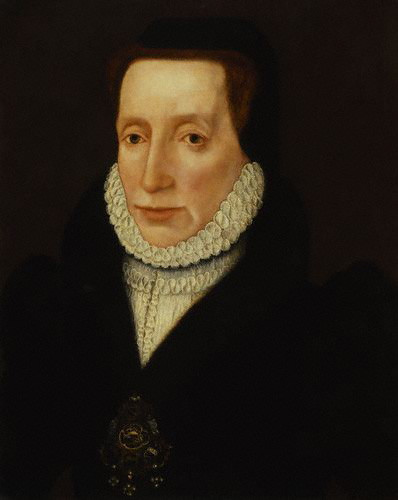
Lady Margaret Douglas, Countess of Lennox (1515 – 1578)
Margaret was the only child of Margaret Tudor and the second of her three husbands, Archibald Douglas, 6th Earl of Angus. Prior to her birth, Margaret’s parents left Scotland for England because of difficulties her father was having in Scotland, and so, Margaret was born in England. She was brought up in England with her cousin Mary, the future Queen Mary I. The two cousins remained close to each other their whole lives. Margaret married a Scottish exile, Matthew Stewart, 4th Earl of Lennox. The couple had several children but only two sons survived childhood. Their elder son Henry Stuart, Lord Darnley was the second of the three husbands of his first cousin Mary, Queen of Scots. Their only child was James VI, King of Scots who succeeded Queen Elizabeth I of England as James I, King of England. Through her grandson King James I, Margaret is an ancestor of the British royal family and many other European royal families. When Margaret died, she was given a grand funeral by her cousin Queen Elizabeth I and was buried at Westminster Abbey where a beautiful tomb was erected, most likely by her grandson King James I, in the same chapel where James later erected a tomb for his mother Mary, Queen of Scots.
*********************
Paternal First Cousins: Children of Mary Tudor and Charles Brandon, 1st Duke of Suffolk
Henry Brandon (1516 – 1522), died in childhood
*********************

Lady Frances Brandon, Duchess of Suffolk (1517 – 1559)
Although Frances and her siblings were only the children of a duke, they had their mother’s royal blood. They were the grandchildren of King Henry VII of England and the nieces and nephews of King Henry VIII of England, and therefore had claims to the English throne. Frances married Henry Grey, 3rd Marquess of Dorset, later Duke of Suffolk. They had a son and a daughter who both died young and then had three daughters including Lady Jane Grey. As the niece of King Henry VIII, Frances was one of the highest-ranking women at court and often took on ceremonial duties. When Henry VIII died, his only son and Frances’ first cousin, succeeded him as King Edward VI.
Edward VI was sickly and probably had tuberculosis. His reign would only last six years. Edward VI’s death and the succession of his Catholic half-sister Mary would spell trouble for the English Reformation. Edward opposed his half-sister Mary’s succession not only for religious reasons but also because he believed her to be illegitimate and his belief in male succession. He also opposed the succession of his half-sister Elizabeth for reasons of illegitimacy and belief in male succession. King Edward VI composed a document “My devise for the succession” in which he passed over his half-sisters and Frances. Edward meant for the throne to go to the Frances’ daughters and their male heirs. After great suffering, fifteen-year-old King Edward VI died and Frances’ eldest daughter Lady Jane Grey was told that she was queen, and reluctantly accepted the fact. Jane’s reign lasted only nine days. Henry VIII’s elder daughter and Jane’s first cousin Mary gathered an army and marched on London. In the aftermath, among those executed were Frances’ husband, her daughter Jane, and Jane’s husband Lord Guildford Dudley.
Frances’ life was now in ruins. Because her husband was a traitor, all his possessions reverted to the Crown. Frances managed to plead with her cousin Queen Mary I to show mercy. Mary agreed that some of the Duke of Suffolk’s property could remain with the family. Frances married her Master of the Horse Adrian Stokes and they had two stillborn children and a daughter who died in infancy. Frances, aged 42, died during the reign of her first cousin Queen Elizabeth I who paid the cost of her funeral. She was buried at Westminster Abbey. Four years later, her widower Adrian Stokes had a beautiful tomb and effigy placed over her grave.
*********************

Portrait of either Lady Eleanor or her daughter Lady Margaret
Lady Eleanor Brandon, Countess of Cumberland (1519 – 1547)
Eleanor married Henry Clifford, 2nd Earl of Cumberland. Eleanor’s uncle King Henry VIII attended her wedding. Eleanor and her husband had two sons who did not survive infancy and one daughter Lady Margaret Clifford. Eleanor received the honor of being chief mourner at the funeral of Catherine of Aragon, Henry VIII’s first wife.
*********************

Henry Brandon, 1st Earl of Lincoln (circa 1523 – 1534)
Henry was created Earl of Lincoln by his uncle Henry VIII when he was two-years-old. He died when he was ten or eleven years old.
*********************
MATERNAL FIRST COUSINS
Maternal First Cousins: Children of Mary Boleyn and her first husband William Carey

Catherine Carey, Lady Knollys (1524 – 1569)
Catherine’s mother Mary Boleyn had once been the mistress of King Henry VIII. Some historians believe that Catherine was an illegitimate child of Henry VIII. It is thought that Catherine witnessed the execution of her aunt Anne Bolyen and even stayed with her the night before her execution. She served as Maid of Honor to Anne of Cleves and Catherine Howard, the fourth and fifth wives of Henry VIII, and was Chief Lady of the Bedchamber to Queen Elizabeth I, her first cousin.
Catherine married Sir Francis Knollys, a courtier in the service of Henry VIII, Edward VI and Elizabeth I, and Treasurer of the Household for Elizabeth I. The couple had 15 children including Lettice Knollys, who married three times. Lettice’s first marriage was to Walter Devereux, 1st Earl of Essex and they were the parents of Robert Devereux, 2nd Earl of Essex, a favorite of Elizabeth I in her old age. He led an unsuccessful coup d’état against the government and was executed for treason. Lettice’s second marriage was to Robert Dudley, 1st Earl of Leicester, a favorite of Queen Elizabeth I from her accession until his death. He was a suitor for Elizabeth’s hand for many years.
*********************
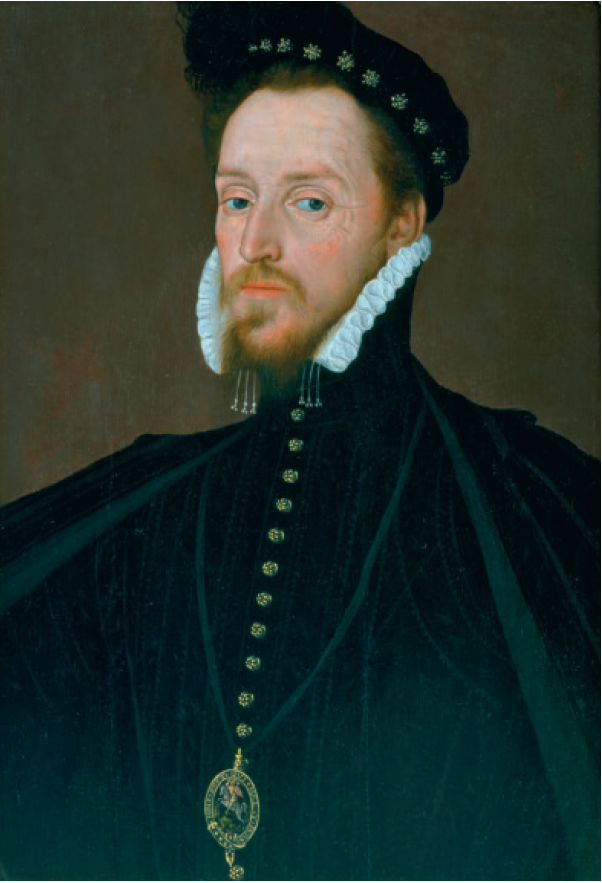
Henry Carey, 1st Baron Hunsdon (1526 – 1596)
Although some historians think Henry VIII could have been Henry’s father, it is probable that the affair between Henry VIII and Mary Boleyn ended before Henry was conceived. Henry married Anne Morgan, daughter of Sir Thomas Morgan of Arkestone and had eight sons and eight daughters. Henry was a Member of Parliament. He was created Baron Hunsdon and made a Knight of the Garter by his first cousin Elizabeth I. Elizabeth also appointed Henry Captain of the Gentlemen Pensioners, making him her personal bodyguard. For the last eleven years of his life, Henry was the Lord Chamberlain, the most senior officer of the royal household. Henry was the founder and the patron of Lord Chamberlain’s Men, the company of actors for which William Shakespeare wrote during most of his career.
*********************
Works Cited
-
- Lundy, D. (2019). Main Page. [online] Thepeerage.com. Available at: http://www.thepeerage.com/. (for genealogy information)
- Unofficial Royalty. (2019). Unofficial Royalty. [online] Available at: https://www.unofficialroyalty.com. (for biographical and genealogy information)
- Wikipedia. (2019). Main Page. [online] Available at: https://en.wikipedia.org/. (for biographical and genealogy information)
This article is the intellectual property of Unofficial Royalty and is NOT TO BE COPIED, EDITED, OR POSTED IN ANY FORM ON ANOTHER WEBSITE under any circumstances. It is permissible to use a link that directs to Unofficial Royalty.


